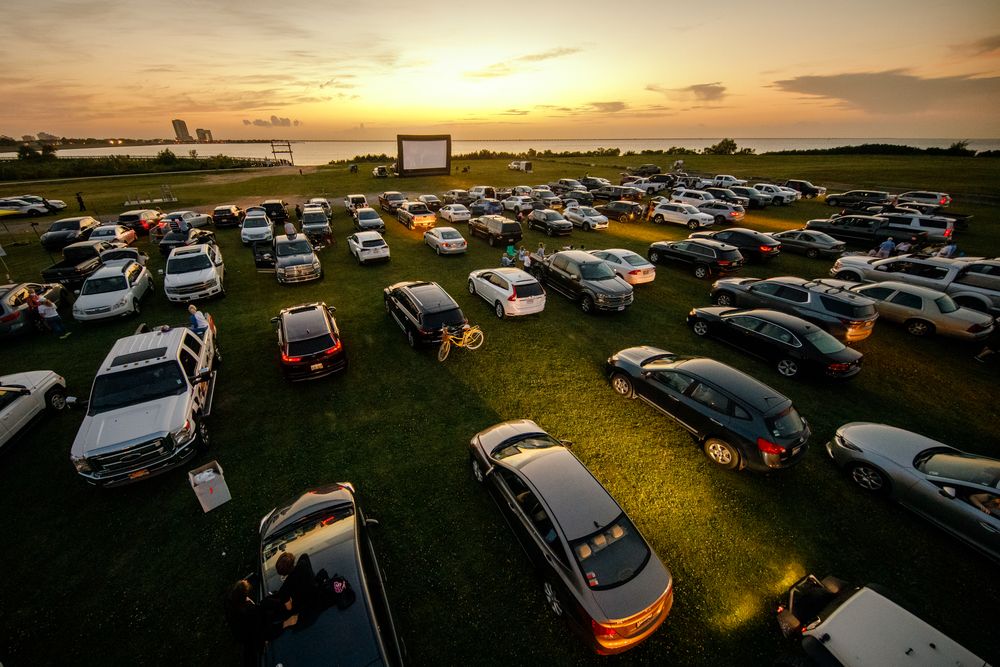| The pandemic has forced us to change our behavior in dramatic ways. We make wide arcs to avoid people on the sidewalk. The simple act of eating at a restaurant has become a thrilling adventure. And our hands smell vaguely like cheap tequila all the time. If the pandemic had lasted, say, one to two months, one could imagine society snapping back quickly to "the way things were." We'd return to eating $18 salads at our office desks. We'd shake hands without flinching. But Covid-19 has stuck around for, well, a really long time. And I'm curious about which aspects of the pandemic lifestyle will outlast the plague. As The Atlantic's Derek Thompson put it, "although the biological stage of the pandemic might come to an end in 2021, the infrastructural aftershocks will be with us for a while." What might those aftershocks be? I'll explore some of the trendiest trends that developed over the past 10 months and try to paint a clearer picture of 2021 and beyond. Work from home Let's get the obvious out of the way first: There will be a lot more remote workers, maybe triple or quadruple the amount there was before the pandemic, per McKinsey. What about that trend is so sticky? - It can save companies lots of money on real estate. Travel publisher Skift made just over $10 million in revenue in 2018...and it was paying $600,000 a year to rent office space in Manhattan. Once the pandemic hit, it quickly ditched the office.
- Companies are also facing a drastically new landscape in the war for talent. To recruit the best workers, you may have no choice but to allow them to work from a cabin near Glacier National Park...because your rival will.
- Survey after survey this year showed freshly minted remote workers enjoyed the flexibility of their new lifestyle. Apparently, people really do not like spending their mornings and afternoons stuck in traffic.
But "remote work" doesn't mean "WFH." We can expect more companies to create tools to support the remote worker, from asynchronous video startups like Loom to companies aiming to replicate the "serendipity" of random conversations in the office hallway. Plus, in a post-pandemic world, people will be able to work in settings other than their bedrooms, like a coffee shop or a library. Will virtual tools fully replicate the office experience? Not 100%, which is why many execs expect some sort of hybrid arrangement will emerge: Depending on your job function, you might come in a few days a week to a "hot desk" setup (basically a flexible workspace where people rotate in and out). It's not crazy to think coworking companies like WeWork might benefit from the emergence of the two-day-a-week office worker. Toward a framework Is there some kind of "rule" that determines whether a pandemic-inspired trend will stick around after we've all gotten our shots? Maybe not, but I'll put one forward anyway: If the change a) made people's lives better and/or b) saved a company money, we can reasonably assume some form of the behavior will stick around. As an example, take cross-border leisure travel, which the pandemic essentially eliminated. Did that make people's lives better? Well, I don't think I can name a single person who enjoys looking at pictures of Paris more than actually walking the Rue Denoyez. In fact, the urge to travel was so strong that people paid hundreds of dollars to eat dinner on an Airbus A380 just for the "thrill" of boarding a plane again. For all these reasons, we can anticipate a snapback for leisure travel next summer. Business travel is another story. For companies, it's costly. For employees, it can be fun; it can also mean three nights at a Holiday Inn in Topeka. But the pandemic experience has shown you don't necessarily need to see someone in person to onboard, strike a deal with, or sell something to them. - The WSJ's Scott McCartney estimates 19%–36% of business travel will permanently vanish (largely accounted for by intra-company meetings and training going virtual). Bill Gates thinks more than 50% of company trips will never come back.
Let's talk about shopping Like most Americans, you probably did more of it online this year. E-commerce sales accounted for 16.1% of U.S. retail sales in Q2 2020, up from 10.8% the year before. So will you suddenly start going back to strip malls once the pandemic is over? Probably not. First of all, e-commerce was a growing share of retail sales before the pandemic, meaning people were increasingly shopping online whether they were forced to by lockdowns or not. Two decades ago, e-commerce made up just 0.9% of U.S. retail sales. What the pandemic did was squeeze 10 years of adoption into just three months, according to McKinsey. And Americans have indicated they're satisfied with this new shopping landscape. - More than half of U.S. consumers will continue ordering grocery delivery or curbside pickup after the pandemic, per that same McKinsey survey.
- And almost 70% will continue to buy online for in-store pickup.
Zoom out: Overall satisfaction with e-commerce is likely a good sign that other pandemic winners of the "stay-at-home" economy, such as streaming and fitness, could continue their momentum beyond 2020. Finally, the future of cities Here's why NYC is dea— Just kidding. I'm not here to start a rumble by proclaiming New York City dead or alive. And those who've predicted the decline of cities have notoriously been forced to eat their words time and time again. But the pandemic might've accelerated a reshuffling of the urban power rankings. - Up: Mid-tier, cheaper cities like Madison, WI, and Sacramento, CA.
- Down: Expensive megacities like NYC and SF. San Francisco studio rents fell 35% year-over-year in November.
What happened? A lot of it has to do with the growing adoption of remote work. Many people decided that, if they don't have to commute to an office, they'd rather not live in a cramped downtown apartment that guzzles up 40% of their monthly paycheck. Corporations also realized they could take advantage of lower costs by moving out of places like California without compromising access to top talent. - But uber-expensive coastal regions were facing headwinds before the pandemic, too. New York City was losing an average of 376 people per day to other U.S. cities last year.
Bottom line: Cities will always exist, but don't take their size for granted. In 1950, Detroit was a powerhouse with a population of more than 1.8 million. It had just 670,000 residents in 2019. + Let's start a conversation: Agree or disagree with any of my analysis above? Send me an email at neal@morningbrew.com—I'd love to chat. | 








No comments:
Post a Comment